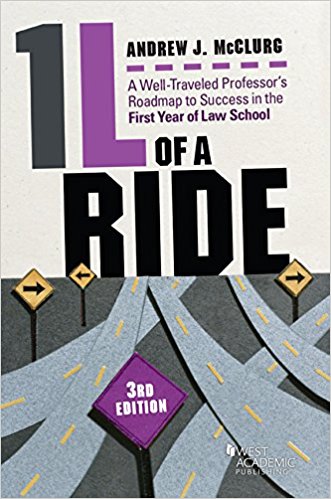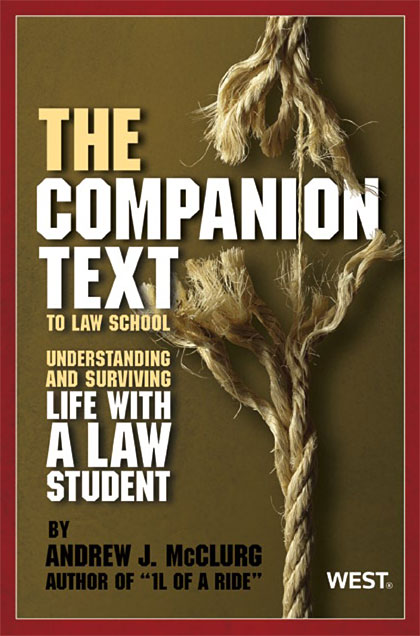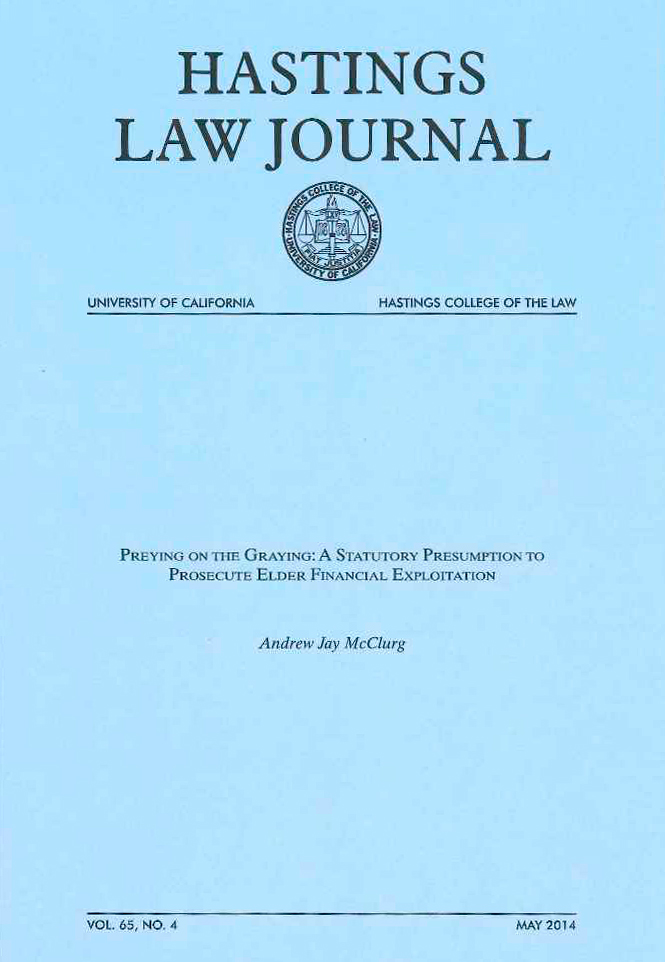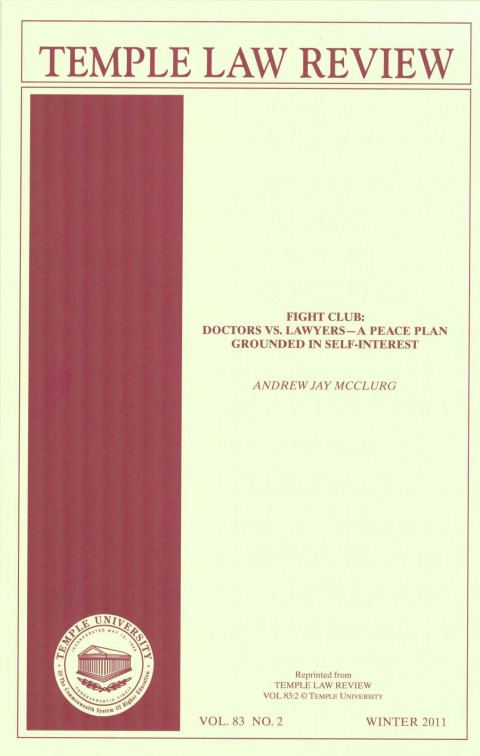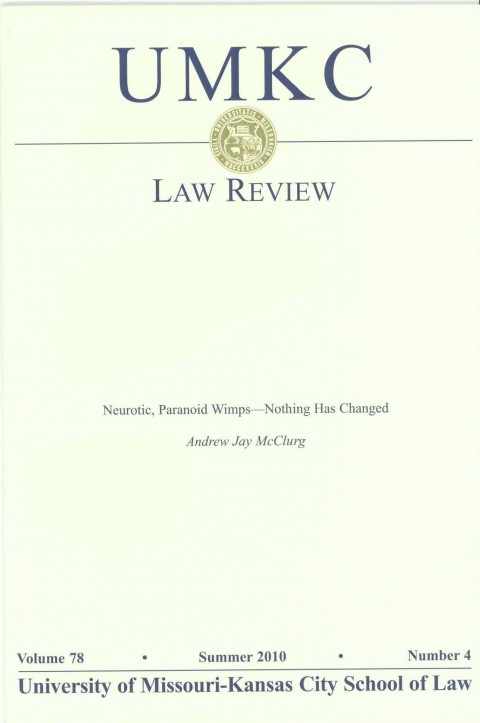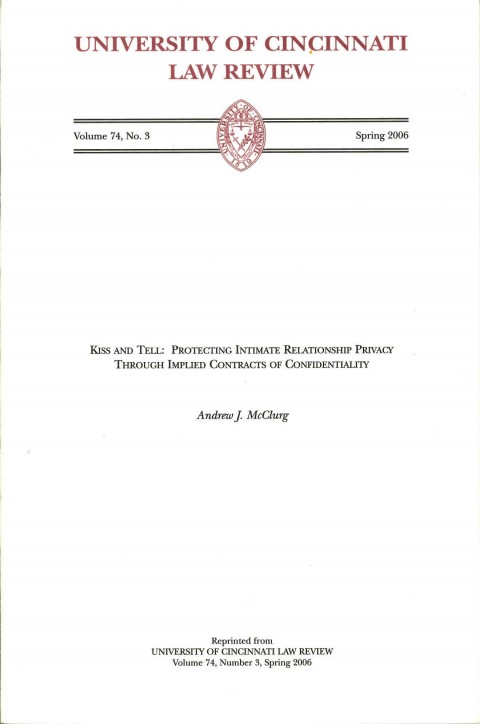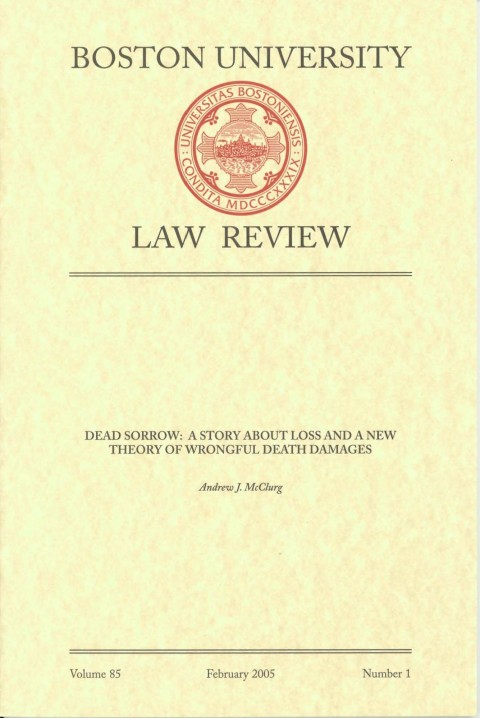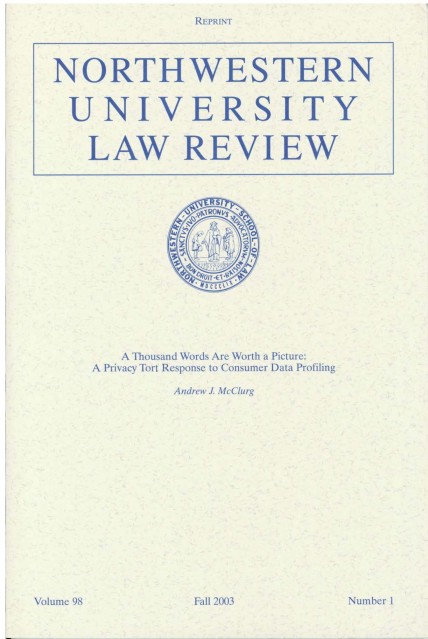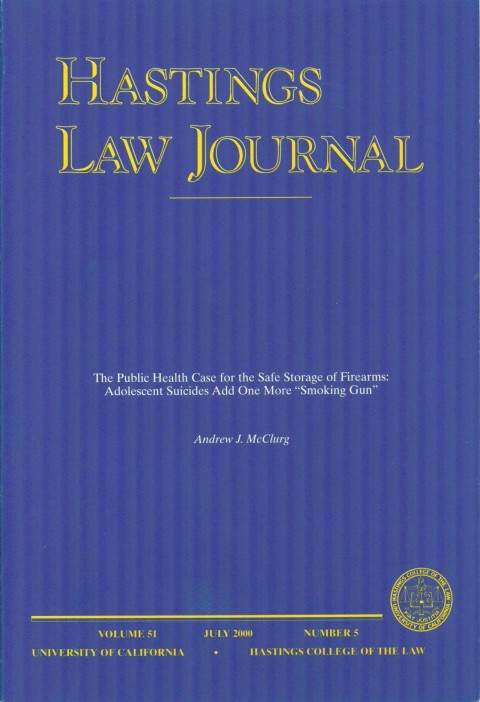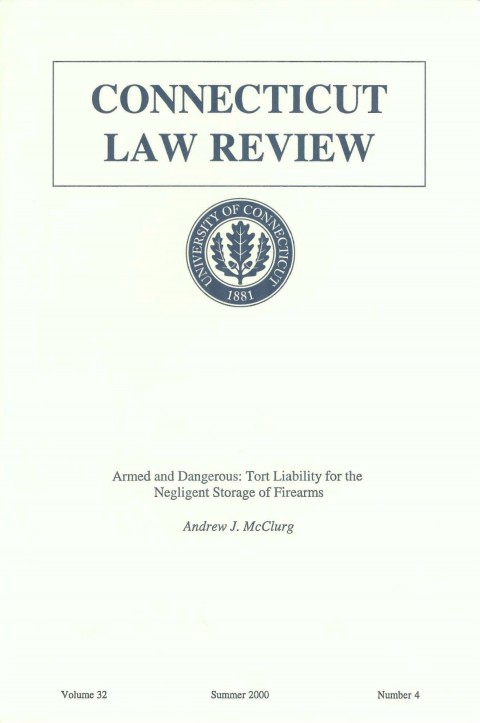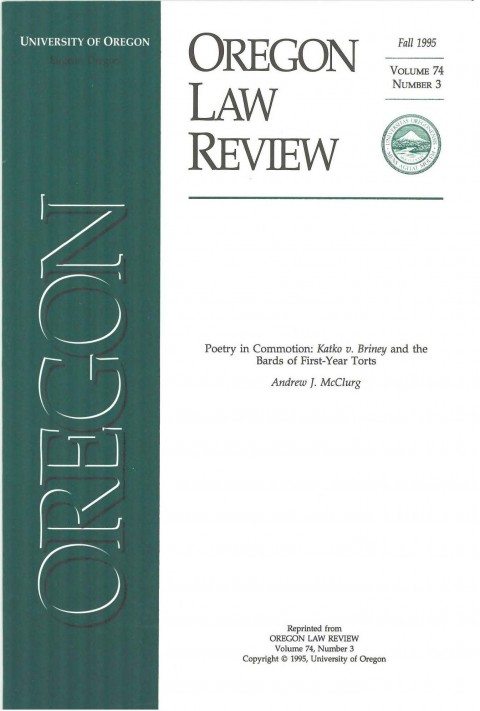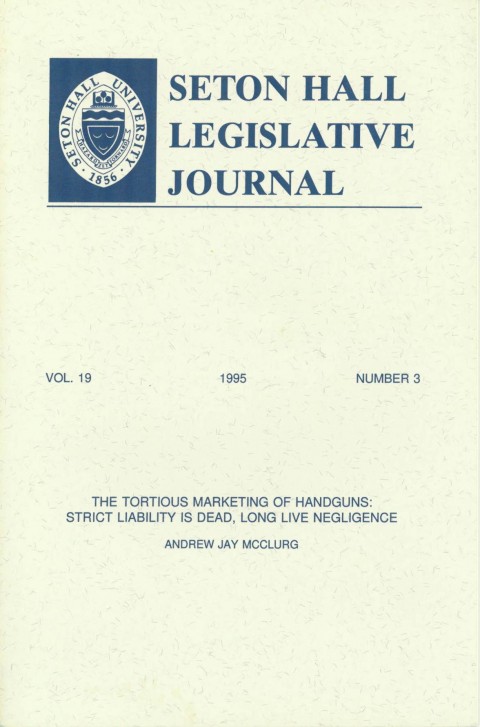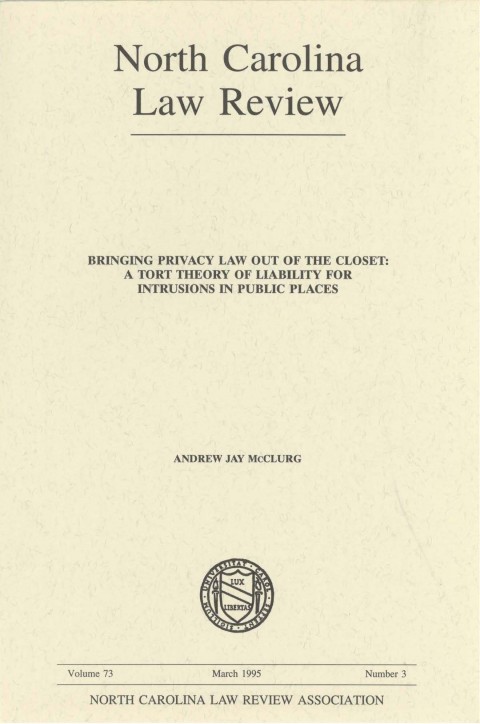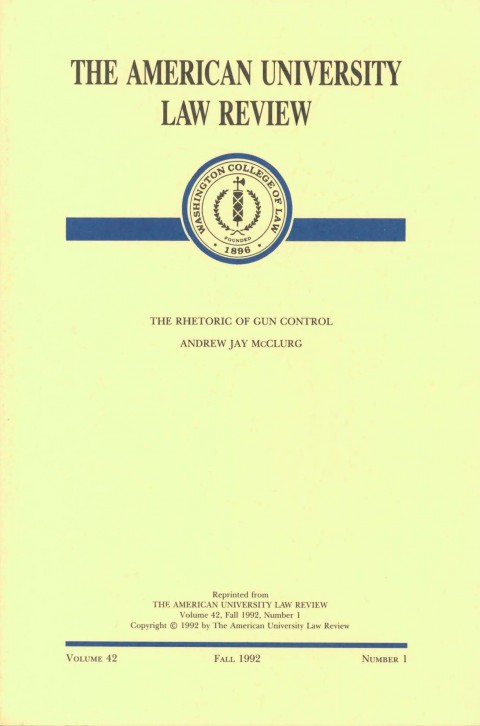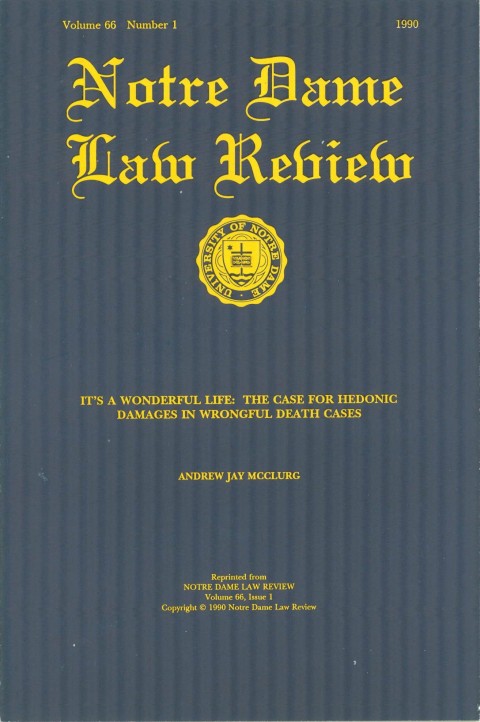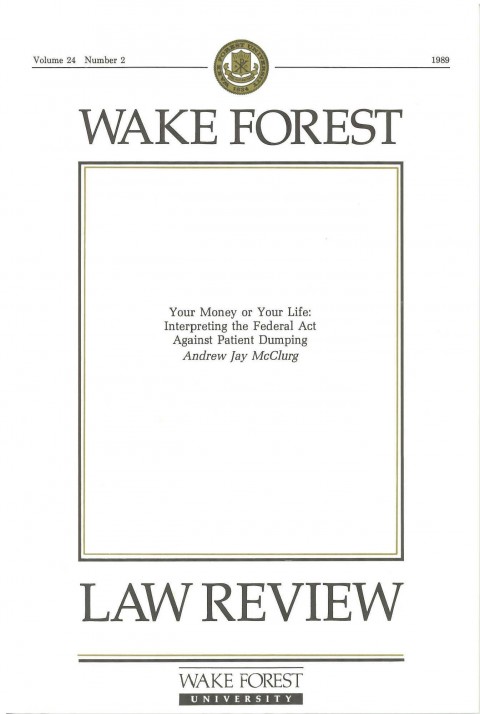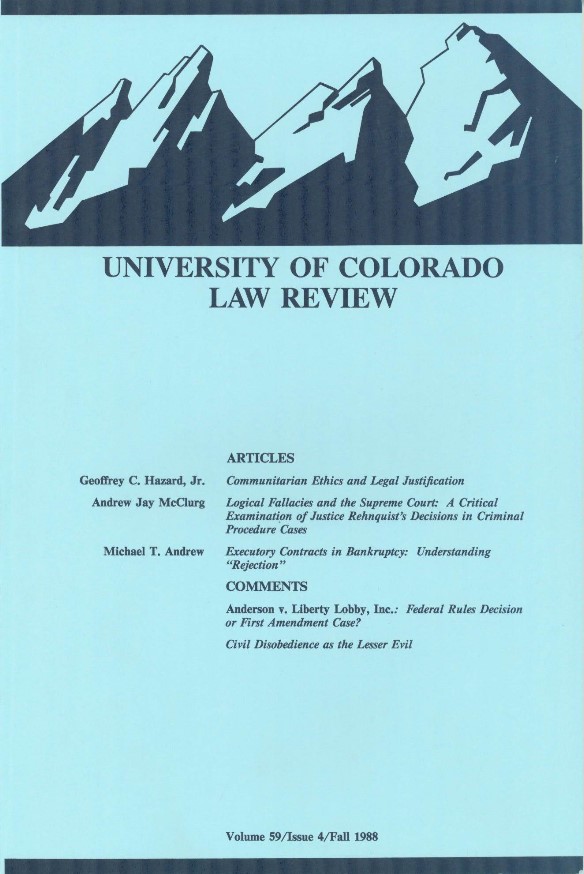August 11th, 2012 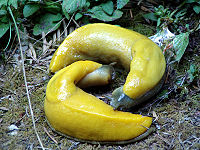 Banana Slugs – Mascot for U.C.-Santa Cruz [Judge Terence T. Evans, U.S. Court of Appeals for the Seventh Circuit, passed away in 2011. Here’s a nice tribute to him on the Marquette law school (where he attended law school) faculty blog.]
In an opinion involving controversy over “Chief Illiniwek,” mascot of the University of Illinois since 1926, Judge Terence Evans of the U.S. Court of Appeals for the Seventh Circuit once again showed his dominance as the nation’s premiere judicial sports buff.
A group of students and faculty who believed the mascot degraded Native Americans brought suit against the university chancellor, seeking a declaratory judgment that the chancellor’s order banning all speech directed toward prospective student athletes without prior permission violated their First Amendment rights. The students and faculty wanted to contact prospective student athletes regarding the controversy.
The court found the policy violated the plaintiffs’ rights, but before getting to the merits, Judge Evans took a substantial detour into sports mascot trivia:
In the Seventh Circuit, some large schools–Wisconsin (Badgers), Purdue (Boilermakers), Indiana (Hoosiers), Notre Dame (The Fighting Irish), DePaul (the Blue Demons), the University of Evansville (Purple Aces), and Southern Illinois (Salukis)–have nicknames that would make any list of ones that are pretty cool. And small schools in this circuit are no slouches in the cool nickname department. One would have a hard time beating the Hustlin’ Quakers of Earlham College (Richmond, Indiana), the Little Giants of Wabash College (Crawfordsville, Indiana), the Mastodons of Indiana University-Purdue University-Fort Wayne (Fort Wayne, Indiana), and the Scarlet Hawks of the Illinois Institute of Technology.
But most schools have mundane nicknames. How can one feel unique when your school’s nickname is Tigers (43 different colleges or universities), Bulldogs (40 schools), Wildcats (33), Lions (32), Pioneers (31), Panthers or Cougars (30 each), Crusaders (28), or Knights (25)? Or how about Eagles (56 schools)? The mascots for these schools, who we assume do their best to fire up the home crowd, are pretty generic–and pretty boring.
“Some schools adorn their nicknames with adjectives–like “Golden,” for instance. Thus, we see Golden Bears, Golden Bobcats, Golden Buffaloes, Golden Bulls, Golden Eagles (15 of them alone!), Golden Flashes, Golden Flyers, Golden Gophers, Golden Griffins, Golden Grizzlies, Golden Gusties, Golden Hurricanes, Golden Knights, Golden Lions, Golden Panthers, Golden Rams, Golden Seals, Golden Suns, Golden Tigers, and Golden Tornados cheering on their teams.
All this makes it quite obvious that, when considering college nicknames, one must kiss a lot of frogs to get a prince. But there are a few princes. For major universities, one would be hard pressed to beat gems like The Crimson Tide (Alabama), Razorbacks (Arkansas), Billikens [Fn.2]
[Fn.2] What in the world is a “Billiken”?
(St.Louis), Horned Frogs (TCU), and Tarheels (North Carolina). But as we see it, some small schools take the cake when it comes to nickname ingenuity. Can anyone top the Anteaters of the University of California-Irvine; the Hardrockers of the South Dakota School of Mines and Technology in Rapid City; the Humpback Whales of the University of Alaska-Southeast; the Judges (we are particularly partial to this one) of Brandeis University; the Poets of Whittier College; the Stormy Petrels of Oglethorpe University in Atlanta; the Zips of the University of Akron; or the Vixens (will this nickname be changed if the school goes coed?) of Sweet Briar College in Virginia? As wonderful as all these are, however, we give the best college nickname nod to the University of California-Santa Cruz. Imagine the fear in the hearts of opponents who travel there to face the imaginatively named “Banana Slugs”?
From this brief overview of school nicknames, we can see that they cover a lot of territory, from the very clever to the rather unimaginative. But one thing is fairly clear–although most are not at all controversial, some are. Even the Banana Slug was born out of controversy. For many years, a banana slug (ariolomax dolichophalus to the work of science) was only the unofficial mascot at UC-Santa Cruz. In 1981, the chancellor named the “Sea Lion” as the school’s official mascot. But some students would have none of that. Arguing that the slug represented some of the strongest elements of the campus, like flexibility and nonagressiveness, the students pushed for and funded a referendum which resulted in a landslide win for the Banana Slug over the Sea Lion. And so it became the official mascot.
Not all mascot controversies are “fought” out as simply as was the dispute over the Banana Slug. Which brings us to the University of Illinois where its nickname is the “Fighting Illini,” a reference to a loose confederation of Algonquin Indian Tribes that inhabited the upper Mississippi Valley area when French explorers first journeyed there from Canada in the early seventeenth century. The university’s mascot, to mirror its nickname–or to some its symbol–is “Chief Illiniwek.” Chief Illiniwek is controversial. And the controversy remains unresolved today. …”
Even if you’re not a sports fan, you have to appreciate a federal appellate judge who uses phrases like “pretty cool” and “pretty boring” in his opinions. I wonder if he talked like that during oral arguments. “Counselor, that was a pretty cool motion you filed the other day, but it was pretty boring.”
R.I.P. Judge Evans. You are missed.
— Crue v. Aiken, 370 F.3d 668, 671–72 & n.2 (7th Cir. 2004). Thanks to Professor Howard Wasserman, a decent sports trivia buff in his own right.
July 6th, 2012 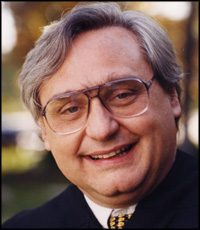 Siskel and Kozinski? Judge Alex Kozinski, of the U.S. Court of Appeals for the Ninth Circuit, was well-known for his sparkling prose in writing opinions, but his most classic opinion was U.S. v. Syufy Enterprises, in which he weaved in more than 200 movie titles.
In Syufy, the federal government sued Las Vegas movie-chain owner Syufy for antitrust violations. In affirming the trial court’s dismissal of the antitrust charges, rumor had it that Judge Kozinski wove more than 200 movie titles into the text of his fourteen-page opinion.
But did it really happen? Was it urban legend? Bourbon legend?
It really happened. Daniel Solzman of the Tarlton Library at the University of Texas law school assembled the entire list of movies Kozinski managed to cram into Syufy as part of its Law in Popular Culture Collection. Here are the movie titles in the order they appeared:
M, Suspect, Giant, Nevada, Illegal, Monkey Business, Platoon, David, 8 1/2, The Power, The Competition, Greatest Hurdle, Gone are the Days, Popcorn, Something for Everyone, Manpower, The Producers, Formula, Splash, Shame, Stir, Titanic, Easy Money, No Holds Barred, Upper Hand, Rivals, Rocky, Until September, September, Midway, The Big Picture, Do the Right Thing, Brass Knuckles, The Accused, Humongous, Little Big Man, Chances, Vice Versa, Always, Nuts, The Seven-Ups, Big, Ordinary People, Possessed, Foul Play, The Survivors, Personal Services, Time after Time, Challenge, Testimony, Riding High, Captured, Utopia, Dark Horse, Invitation, Major League, Against all Odds, Fighting Fire with Fire, Trading Places, The End, Country, Losing Ground, Short Circuit, Lock Up, Dead Heat, Personal Best, Absolute Beginners, Staying Alive, Big Business, Network, Shopworm, Witness, High Tide, The Law, Wisdom, The Hand, Guilty, Illicit, Satisfaction, The Victim, Raw Deal, The Evil, Above the Law, Down by Law, Off Limits, The Enforcer, Fear, The Villain, The Weapon, Champion, The Natural, Deliverance, The Disappearance, The Challenge, Running, The Other, Top Gun, Players, The Trial, Paid, Head, The Squeeze, Seven Days, Cold Feet, Gambit Backfire, Contract, Cold Turkey, Lost, Plenty, After Hours, The Judge, The Trap, Leviathan, Stick, Tough Enough, Making It, Risky Business, Squeeze Play, Sitting Ducks, Boomerang, Big Trouble, The Principal, House of Cards, Tribute, America, Target, Paper Tiger, Distance, Local Hero, Being There, Fire Sale, Abandoned, The Lawyer, You and Me, Avalanche, Surrender, The First Time, Hard Choices, Showdown, Fail-Safe, The Great Race, Relentless, The Fountainhead, Out, House, Volunteers, October, 1984, Over the Top, Ran, Trapped, The Gate, Hard Times, Partners, California, Barrier, Five, Colors, Exposed, Switching Channels, Checking Out, Fame, Great Expectations, Without a Trace, Perfect, Out of Bounds, Offbeat, Critic’s Choice, The Longshot, The Sure Thing, Misunderstood, Boom Town, Static, Alien, Things Change, High Hopes, The Jackpot, Drive-in, Performance, New Faces, The Thing, The Crucible, Violated, All the Right Moves, The Creator, Interiors, Clue, Fashion, Winner Take All, Any Number Can Play, Insignificance, The Harder They Fell, Missing, Shakedown, Ruthless Predator, Dangerous, Critical Condition.
Kozinski never confirmed or denied the rumors about intentionally loading up Syufy with movie titles.
— United States v. Syufy Enterprises, Inc., 903 F.2d 659 (9th Cir. 1990); see also The Syufy Rosetta Stone, 1992 BYU L. Rev. 457 (1992).
June 9th, 2012 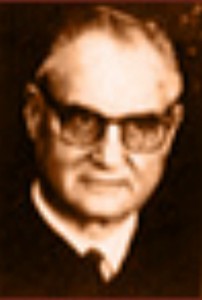 Former Michigan Supreme Court Justice Eugene F. Black Thanks to Graham Bateman for turning Lawhaha.com on to a real character: Justice Eugene F. Black, a judge whose inflammatory dissent-writing makes caustic U.S. Supreme Court Justice Antonin Scalia’s dissents read like love letters in comparison.
Black regularly lashed out at his colleagues on the Michigan Supreme Court, on which he served from 1956-72, holding their feet to the fire when he saw their actions as reckless, destructive, deceptive, partisan, or willful.
For being so outrageous in his outrage, and for having such a sharp, articulate poison pen, Justice Black lands in the Strange Judicial Opinions Hall of Fame.
Black was a judge who took to heart the words of Benjamin Cardozo’s famous ode to dissent-writing, which Black quoted in Guilmet v. Campbell, 188 N.W.2d 601, 611 (Mich. 1971):
Comparatively speaking at least, the dissenter is irresponsible. The spokesman of the court is cautious, timid, fearful of the vivid word, the heightened phrase … Not so, however, the dissenter. He has laid aside the role of the hierophant, which he will be only too glad to resume when the chances of war make him the spokesman of the majority. For the moment, he is the gladiator making a last stand among the lions. (From Selected Writings of Benjamin Nathan Cardozo 353 (Fallon Publications 1947))
Justice Black may have been a gladiator, but I suspect his colleagues had a few other names for him. He wasn’t satisfied to simply disagree in his dissents. He liked to rip his colleagues to shreds in the process. Guilmet provides a good example. The majority held in favor of the plaintiff in a breach of contract action against a surgeon. Black’s dissent began like this:
In these early weeks of 1971 an exuberant new majority of a once great appellate court prepares to launch an unwarned, unprecedented, wholly gratuitous and destructively witless war of “contract liability” upon a brother profession ….
He was just getting warmed up. A little later, he said:
As against this there is no pretense of proffered authority or precedent. My Brothers five just say “This is the law.” That they do with an arrantly dixitized vengeance, for all of the skilled research clerks of Lansing, working with no surcease and without food or drink, never could come up with any kind of respectable or even plausible authority [for the court’s holding].
And then later:
Thus far there appears to the writer still another like bushment the Court should see but does not see, or perhaps is too absorbed to see, dead ahead.
Other examples of Justice Black’s unique style of brethrenly love include:
In re Apportionment of State Legislature, 197 N.W.2d 249, 262 (Mich. 1972) (Black, J., dissenting) (“[T]oo much of that heady stuff known as partisan politics has been steamed into the present proceeding and … this partisan-nominated Court should disqualify itself ….”)
Plumley v. Klein, 199 N.W.2d 169, 173 (Mich. 1972) (Black, J., dissenting) (“The Court has chosen the sleaziest of pleaded causes as opportune for the nullification of [a prior case.] … I cannot hold still before this latest judicial monster.”)
Jones v. Bloom, 200 N.W.2d 196, 207–08 (Mich. 1971) (“[O]ur majority must have labored, conferred, caucused and searched … to find some or any colorable way to overrule [jury’s verdict] … Our reports … are on the shelves of thousands of lawyers and judges. They bear now undeniable witness of both a profaning and deplorable fact; that this temporally seated and largely fledgling Court is bent purposefully upon progressive destruction of all or near all of the great canons and precedential precept which the nationally revered Cooley Court, and the succeeding Fellows Court, have bequeathed to Michigan.”)
Don’t know the merits of any of these cases, but in a day of cautious and tepid judges, you gotta love a judge who was willing to tell it like is (at least as he saw it).
— Citations included in text above. Thanks to Graham Bateman.
May 11th, 2012 U.S. Seventh Circuit Court of Appeals Judge Terence T. Evans, who passed away in 2011, was well-known for his opinions jammed with sports trivia (see here and here).
But in a criminal case involving witness tampering and “too many Murphys” (the defendant, his son and the trial judge were all named Murphy), Judge Evans mined a different pop culture-vein in an opening footnote necessitated by a court reporting error in the trial transcript:
1. The trial transcript quotes Ms. Hayden as saying Murphy called her a snitch bitch “hoe.” A “hoe,” of course, is a tool used for weeding and gardening. We think the court reporter, unfamiliar with rap music (perhaps thankfully so), misunderstood Hayden’s response. We have taken the liberty of changing “hoe” to “ho,” a staple of rap music vernacular as, for example, when Ludacris raps “You doin’ ho activities with ho tendencies.”
Give credit to Ludacris. Cited as authority by the distinguished U.S. Court of Appeals for the Seventh Circuit. Maybe his next release will be a hornbook.
— United States v. Murphy, 406 F.3d 857, 859 n.1 (7th Cir. 2005). Thanks to the several folks who sent this opinion.
November 14th, 2011 U.S. Ninth Court of Appeals Judge Alex Kozinski is well known for sprinkling pop culture references throughout his opinions, particularly in the famous Syufy opinion, which wove in the titles of more than 200 movies. (See “Coming Soon to a Footnote Near You”)
A less noticed, but just as fun pop culture-laden opinion was his dissent to an order denying rehearing en banc in White v. Samsung Electronics America, Inc., a case where the Ninth Circuit upheld a “right of publicity” claim by former game show hostess Vanna White against Samsung for using a robot resembling her game show persona in a television commercial.
Complaining that, “[u]nder the majority’s opinion, it’s now a tort for advertisers to remind the public of a celebrity,” Kozinski excoriated the court for over-extending intellectual property rights in an opinion jammed full of pop culture references.
(That’s one thing to love about Kozinski’s writing: he can be pithy, insightful, and amusing in less than twenty words.)
Pop culture ran amuck in a single footnote (footnote 6) that includes references to (in order): grunge rocker Tad Doyle, the Hell’s Angels, Marvel Comics, Breakfast at Tiffany’s, Breakfast of Champions, The Electric Kool-Aid Acid Test, Looking for Mr. Goodbar, The Coca-Cola Kid, The Kentucky Fried Movie, Harley Davidson and the Marlboro Man, The Wonder Years, Wonder Bread, Joseph and the Amazing Technicolor Dream Coat, Janis Joplin, Paul Simon, Leonard Cohen, Bruce Springsteen, Prince, dada, Monty Python, Roy Clark, Mel Tillis, the Talking Heads, Andy Warhol, REO Speedwagon, 38 Special, Jello Biafra and the Dead Kennedys.
— White v. Samsung Elec. Am., Inc., 989 F.2d 1512, 1512 n.6, 1514 (9th Cir. 1993) (Kozinski, J., dissenting from order denying rehearing en banc). Thanks to Katherine Shipman.
November 14th, 2011 Where do scandals go when they die? They travel upwards, of course … to a U.S. Court of Appeals. At least if they’re scandals involving the saga of President Bill Clinton’s sexcapades.
U.S. Ninth Circuit Court of Appeals Judge Alex Kozinski faced an appeal in a defamation suit filed by former lounge-singer Gennifer Flowers against Hillary Rodham Clinton, James Carville and George Stephanopoulos. With that cast of characters (including Judge K), you know it’s going to be an interesting opinion.
This is an opinion to be admired as much for its lucidity as its colorful take on the events. Here’s a taste from the opening paragraphs (some paragraph breaks inserted):
Long after the public spotlight has moved on in search of fresh intrigue, the lawyers remain. And so we find ourselves adjudicating a decade-old dispute between Gennifer Flowers and what she affectionately refers to as the “Clinton smear machine”: James Carville, George Stephanopoulos and Hillary Clinton. Flowers charges that said machine destroyed her reputation by painting her as a fraud and a liar after she dis-closed her affair with Bill Clinton. We decide whether Flowers’s claims are timely and, if so, whether they survive a motion to dismiss.
Background and Proceedings Below
In the heat of the 1992 presidential primary campaign, the Star—that ubiquitous supermarket source for celebrity scandal—ran a story claiming that Bill Clinton had carried on an affair with an Arkansas woman named Gennifer Flowers. Clinton and Flowers both denied it at first, but a few days later Flowers (doubtless realizing that honesty is the best policy after all) sold her story to the Star.
Clinton continued vigorously denying the allegations and appeared on 60 Minutes with his wife to say they weren’t true. The following day, Flowers responded by holding a press conference where she played recordings of intimate phone calls from Clinton that she’d secretly taped. Later news reports suggested that the tapes may have been selectively edited.
According to Flowers, Hillary Clinton and her two “henchmen,” George Stephanopoulos and James Carville, conspired to protect Bill Clinton’s presidential candidacy from Flowers’s damaging revelations. Flowers claims that during the 1992 campaign and in later political memoirs and interviews, Carville and Stephanopoulos defamed her and painted her in a false light by claiming that she had lied in her story to the Star and “doctored” the tape-recorded phone calls.
Hillary Clinton, the alleged mastermind of the conspiracy, not only orchestrated the defamatory exploits, but also exposed private information about Flowers and organized break-ins of her residence. Flowers claims that, as a result of all this schemery, her reputation has wilted and her blossoming career as a Las Vegas lounge singer has been nipped in the bud.
It’s like the beginning of an intriguing political spy novel you want to keep reading. In the not-as-exciting climax, the Ninth Circuit panel felt compelled under the law to reverse the district court, which had dismissed all of Flowers’ claims.
Meanwhile, Kozinski gave us another Syufy-type mystery (see “Coming Soon to a Footnote Near You!”) by burying an amusing reference in one of the citations. I won’t spoil the mystery. See if you can find it.
— Flowers v. Carville, 310 F.3d 1118, 1122 (9th Cir. 2002) (Kozinski, J.). Thanks to Elise Hendrick .
November 14th, 2011 Seems as though colorful California Court of Appeals Judge Robert Gardner, a Lawhaha.com Hall-of-Famer, had to deal with more than his fair share of bawdy subjects. But to resolve them, he consistently applied his excellent writing with good old common sense, leaving memorable opinions for the rest of us to enjoy.
In People v. Sarong Gals, the owners of “Sarong Gals,” a bar featuring live nude dancers, appealed an injunction entered against them under California’s Red Light Abatement law, a 1913 statute declaring to be a public nuisance any place used for the purpose of lewdness, assignation or prostitution.
Defendant’s primary argument was that the Red Light Abatement statute can not be lawfully applied to “entertainment.”
Judge Gardner disagreed. He began his opinion with a long list of what he called “hilarious highlights” of the “entertainment” observed at Sarong Gals through police surveillance. The judge’s descriptions of these highlights are a bit too graphic for Lawhaha.com, but one of them had something to do with a customer’s sunglasses. Use your imagination or go look up the opinion for details.
With regard to defendant’s argument that the statute could not be constitutionally applied to restrict “entertainment,” Judge Gardner opined that just about any activity, including people getting devoured by lions, appeals to the “entertainment” wishes of some audience somewhere:
Lewdness is lewdness and covering it with a patina of “free expression” is a fiction which the law will not tolerate. Masturbating on stage, causing customers to openly masturbate, allowing patrons to peer into females’ innards, simulating sexual intercourse and in other ways titillating the customers sexually amounts to lewdness—even though it may be entertaining.
…
Presumably, the Romans of the First Century derived entertainment from witnessing Christians being devoured by lions. Given the right audience, the spectacle of a man committing an act of sodomy on another man would provide entertainment value. However, neither this spectacle nor the activities described in the instant case are invested with constitutionally protected values merely because they entertain viewers.
— People v. Sarong Gals, 27 Cal. App. 3d 46, 50–51 (1972). (Thanks to Frank Zotter.)
November 14th, 2011 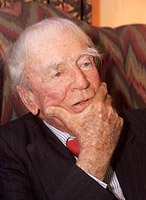 Lawhaha.com Hall of Fame Judge Robert Gardner U.S. Court of Appeals Judge Alex Kozinski, a Lawhaha.com Strange Judicial Opinions Hall-of-Famer, took time to send in his praise for another judge who dared to be different: California Court of Appeals Judge Robert Gardner.
Judge K said Gardner is one of his heroes, and included his favorite Gardner quote, from People v. Benton. Although it involves profanity, as Judge Kozinski said, it’s for a good cause:
Mrs. Barnhill and her daughter, Sainna Okeson, were seated at the kitchen table in Mrs. Barnhill’s apartment on Keel Street in Anaheim on the evening of August 2, 1976. Around midnight, a … man entered. With pistol in hand, he said, “Don’t say a word, don’t say a mother-f****** word.” [Fn.1]
[Fn.1] It is a sad commentary on contemporary culture to compare “Don’t say a word, don’t say a mother-f****** word” with “Stand and deliver,” the famous salutation of Dick Turpin and other early English highwaymen. It is true that both salutations lead to robbery. However, there is a certain rich style to “Stand and deliver.” On the other hand, “Don’t say a word, don’t say a mother-f****** word” conveys only dismal vulgarity.
The speech of the contemporary criminal culture has always been a rich source of color and vitality to any language. Yet, when one compares the “bawds,” “strumpets,” “trulls,” “cut-purses,” “knaves,” and “rascals” of Fielding and Smollett to the “hookers,” “pimps,” “Narcs,” “junkies,” and “snitches” of today’s criminal argot, one wonders just which direction we are traveling civilization’s ladder. “Hooker,” at least, has traceable historical antecedents—although the descendants of General “Fighting Joe” Hooker would probably prefer that their famous ancestor be remembered for something other than his army’s camp followers—such as the slaughter at Chancellorsville.
Judge Gardner used the full term without the asterisks, making it viscerally funnier, but Lawhaha.com tries to stay family friendly.
— People v. Benton, 77 Cal. App. 3d 322, 324 & n.1 (1978).
November 14th, 2011 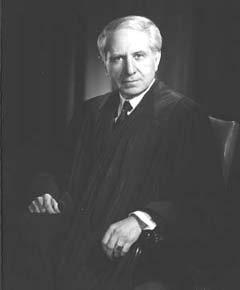 Justice Michael Musmanno, a Lawhaha.com Hall of Famer Any fan of judicial opinion writing needs to study the opinions of the Honorable Michael A. Musmanno (1897-1968). He led a remarkable life. Before joining the Pennsylvania Supreme Court, Justice Musmanno enjoyed an illustrious career as a lawyer, U.S. Congressman and author. Highlights of his career include serving as the presiding judge at the Nuremberg war crime trials and as a defense lawyer in the Sacco & Vanzetti trial.
His opinions are marvelous concoctions of deep-hearted passion and brutal common sense, delivered in highly literate and often hilarious prose.
U.S. Ninth Circuit Court of Appeals Judge Alex Kozinski, another notable opinion-writer, reported to Lawhaha.com that Musmanno has been his model since law school and that he consciously tries to emulate Musmanno’s writing. He laments that today’s law school graduates have never heard of Musmanno and return only blank stares when his name is mentioned.
Here are a couple samples of Musmanno’s writing sent by Chris Nace:
In Bosley v. Andrews, a woman sued a neighbor whose cows trespassed on her farmland to eat her crops. After being chased away in the morning, the “bovine buccaneers,” as Musmanno called them, returned for lunch. “This time they came, eight of them, with reinforcements. They brought along their boy friend, a 1500-pound Hereford white-faced bull.” The bull took chase after the plaintiff, causing her to suffer a heart attack.
A majority of the Pennsylvania Supreme Court rejected the woman’s claim for negligent infliction of emotional distress damages, following the traditional rule that such a claim cannot be maintained in the absence of a “physical impact” with the plaintiff (the bull never actually touched the plaintiff).
In dissent, Musmanno skewered the majority for what he saw as an unjust result, closing his opinion by stating that the majority’s approach “is unsupportable in law, logic, and elementary justice – and I shall continue to dissent from it until the cows come home.”
In Pennsylvania Society for the Prevention of Cruelty to Animals v. Bravo Enterprises, Inc., the plaintiff sought to enjoin a bullfight, but the majority held that the organization lacked standing. Musmanno began his impassioned dissent:
If there is one commodity of which there is no need for a further supply, it is violence. If there is one school that the world can afford to miss, it is one for the tutoring of methods of violence, brutality and cruelty. … [W]e can well do without a bullfight which is nothing less than an open air lyceum in the art of torturing helpless animals.
Add Justice Musmanno to your list of “four dead people with whom you would most like to have dinner.”
— Bosley v. Andrews, 142 A. 2d 263, 267–68, 280 (Pa. 1958) (Musmanno, J., dissenting); Pa. Soc’y for the Prevention of Cruelty to Animals v. Bravo Enterprises, Inc., 237 A. 2d 342 (Pa. 1968) (Musmanno, J., dissenting). Thanks to Chris Nace.
November 14th, 2011 In a classic slip and fall case, plaintiff Joseph Rosenberg slipped on asparagus while dancing at a wedding reception with his sister-in-law and fellow plaintiff, Ruth Schwartz.
The issue was whether the defendant caterer had negligently spilled the asparagus on the dance floor. The trial judge had dismissed the lawsuit on theory that the offending asparagus could have been unwittingly transported onto the dance floor after becoming entrapped in the apparel of the dancers.
As with many of the judicial opinions posted on Lawhaha.com, brief excerpts don’t do this case justice. My favorite part is how the legendary Justice Michael Angelo Musmanno of the Pennsylvania Supreme Court bluntly and rather contemptuously rejected the trial judge’s theory of how the asparagus (which according to testimony formed a puddle three feet in diameter) got on the dance floor (some paragraph breaks inserted):
The trial judge, an ex-veteran congressman and thus a habitue of formal parties and accordingly an expert in proper wearing apparel at such functions, all of which he announced from the bench, allowed testimony as to the raiment worn by the banquetters.
All the men were attired in tuxedos, the pants of which were not mounted with cuffs which could transport asparagus and sauce to the dance floor, unwittingly to lubricate its polished surface. Ruling out the cuffs of the tuxedo pants as transporters of the asparagus, the judge suggested the asparagus, with its accompanying sauce, could have been conveyed to the dance floor by ‘women’s apparel, on men’s coats or sleeves, or by a guest as he table hopped.’
The Judge’s conclusions are as far-fetched as going to Holland for hollandaise sauce. There was no evidence in the case that anybody table hopped; it is absurd to assume that a man’s coat or sleeve could scoop up enough asparagus and sauce to inundate a dance floor to the extent of a three-foot circumference; and it is bizarre to conjecture that a woman’s dress without pockets and without excessive material could latch on to such a quantity of asparagus, carry it 20 feet (the distance from the tables to the dance floor) and still have enough dangling to her habiliments to cover the floor to such a depth as to fell a 185 pound gentleman with 35 years’ dancing experience who had never before been tackled or grounded while shuffling the light fantastic.
…
It can be stated as an incontrovertible legal proposition that anyone attending a dinner dance has the inalienable right to expect that, if asparagus is to be served, it will be served on the dinner table and not on the dance floor.
…
Judgment reversed with a procedendo.
Chief Justice Bell dissented:
One cannot help wondering if plaintiffs had, in the alleged 35 years of dancing, ever been to any dance, let alone a wedding banquet dance. … A dancer cannot, with legal sanction, look only into the captivating eyes of his lovely partner.
I certainly dissent.
— Schwartz v. Warwick-Philadelphia Corp., 226 A.2d 484, 485–87, 488 (Pa. 1967). Thanks to Janet Heydt.
November 14th, 2011 The classic dilemma of the law. Which is more important: following the rules or dispensing justice? Being faithful to precedent or willing to bend technical legal rules to reach the correct result?
We struggle with these issues from the time we’re first-year law students. Rules won out in ugly fashion in In re Estate of Pavlinko.
Vasil Pavlinko and his wife, Hellen, immigrants who spoke little English, went to a lawyer to have separate wills drawn up. Both wills left their residual interest to the same person: Elias Martin, the brother of Hellen Pavlinko. Unfortunately, when it came time to sign the wills, the wills got mixed up and Vasil and Hellen each signed the other’s will.
After the couple died, Elias Martin—the sole residuary legatee under both wills—offered Vasil’s will for probate. Although conceding that the result was “unfortunate,” the Pennsylvania Supreme Court rejected Martin’s petition because Vasil had mistakenly signed Hellen’s will.
Judge Michael Angelo Musmanno, a Strange Judicial Opinions Hall of Famer for his intelligent prose, dissented, in an impassioned Ode to Screwing Up:
Everyone in this case admits that a mistake was made: an honest, innocent, unambiguous, simple mistake, the innocent, drowsy mistake of a man who sleeps all day and, on awakening, accepts the sunset for the dawn.
Nothing is more common to mankind than mistakes. Volumes, even libraries have been written on mistakes: Mistakes of law and mistakes of fact. In every phase of life, mistakes occur and there are but few people who will not attempt to lend a helping hand to the person who mistakes a step for a landing and falls, or the one who mistakes a nut for a grape and chokes, or the one who steps through a glass so clear that he does not see it. This Court, however, says that it can do nothing for the victim of the mistake in this case, a mistake which was caused through no fault of his own, nor of his intended benefactors.
… I know that the law is founded on precedent and in many ways we are bound by the dead hand of the past. But even with obeisance to precedent, I still do not believe that the medicine of the law is incapable of curing the simple ailment here ….
We have said more times than there are tombstones in the cemetery where the Pavlinkos lie buried, that the primary rule to be followed in the interpretation of a will is to ascertain the intention of the testator. Can anyone go to the graves of the Pavlinkos and say that we do not know what they meant? They said in English and Carpathian that they wanted their property to go to Elias Martin.
— In re Estate of Pavlinko, 148 A. 2d 528, 532 (Pa. 1959) (Musmanno, J., dissenting). Thanks to Frank Zotter.
November 14th, 2011 Anyone who appreciates great judicial opinion-writing loves Pennsylvania Supreme Court Justice Michael Musmanno, but his rant over Henry Miller’s classic novel, The Tropic of Cancer, in Commonwealth v. Rubin, was not one of his better outings.
Miller penned The Tropic of Cancer, widely hailed as one of the great novels of the 20th century, in 1934. Published in the U.S. in 1961, the book, which contains several frank sexual passages, became the focus of a number of obscenity trials.
Commonwealth v. Rubin was an action to restrain the selling of the book. The trial court granted an injunction, which a majority of the Pa. Sup. Ct. overturned on First Amendment grounds. Musmanno dissented, unleashing a flood of hyperbole for which there may be no rival in judicial opinion writing. He didn’t just think the book was obscene. He hated it. Here are some choice passages, courtesy of Lisa Lin:
‘Cancer’ is not a book. It is a cesspool, an open sewer, a pit of putrefaction, a slimy gathering of all that is rotten in the debris of human depravity. And in the center of all this waste and stench, besmearing himself with its foulest defilement, splashes, leaps, cavorts and wallows a bifurcated specimen that responds to the name of Henry Miller. One wonders how the human species could have produced so lecherous, blasphemous, disgusting and amoral a human being as Henry Miller. One wonders why he is received in polite society.
…
Policemen, hunters, constables and foresters could easily and quickly kill a thousand rattlesnakes but the lice, lizards, maggots and gangrenous roaches scurrying out from beneath the covers of ‘The Tropic of Cancer’ will enter into the playground, the study desks, the cloistered confines of children and immature minds to eat away moral resistance and wreak damage and harm which may blight countless lives for years and decades to come.
…
To say that ‘Cancer’ has no social importance is like saying that a gorilla at a lawn party picnic does not contribute to the happiness of the occasion.
…
The defendant would have reason to say that ‘Cancer’ is not hard-core pornography; it is, in fact, Rotten-core pornography. No decomposed apple falling apart because of its rotten core could be more nauseating as an edible than ‘Cancer’ is sickening as food for the ordinary mind. ‘Cancer’ is dirt for dirt’s sake, or, more appropriately, as Justice Frankfurter put it, dirt for money’s sake.
…
Then the defendants say that ‘Cancer’ is entitled to immunity under the First Amendment because court decisions have declared that only worthless trash may be proscribed as obscene. To say that ‘Cancer’ is worthless trash is to pay it a compliment. ‘Cancer’ is the sweepings of the Augean stables, the stagnant bilge of the slimiest mudscow, the putrescent corruption of the most noisome dump pile, the dreggiest filth in the deepest morass of putrefaction.
Youch.
— Commonwealth v. Robin, 218 A.2d 546, 557, 547, 550, 552 (Pa. 1966) (Musmanno, J., dissenting). Thanks to Lisa Lin.
November 13th, 2011 In U.S. v. Ramirez Lopez, the defendant was convicted of smuggling aliens into the U.S. from Mexico. One died during the journey due to inclement weather. When border patrol agents interviewed fourteen members of the group, two of them said the defendant was the guide of the expedition while the other twelve exculpated him, denying he was the guide.
The government deported nine of the twelve exculpatory witnesses back to Mexico prior to trial and the trial judge denied admission of the government’s interview notes with them.
It’s fair to say Judge Kozinski was unimpressed by the fairness of the procedure. He began his dissent from the affirmance of the conviction with a satirical, fictional post-trial conversation between the defendant and his lawyer:
Lawyer: Juan, I have good news and bad news.
Ramirez-Lopez: OK, I’m ready. Give me the bad news first.
Lawyer: The bad news is that the Ninth Circuit affirmed your conviction and you’re going to spend many years in federal prison.
Ramirez-Lopez: Oh, man, that’s terrible. I’m so disappointed. But you said there’s good news too, right?
Lawyer: Yes, excellent news! I’m very excited.
Ramirez-Lopez: OK, I’m ready for some good news, let me have it.
Lawyer: Well, here it goes: You’ll be happy to know that you had a perfect trial. They got you fair and square!
[Colloquy continues in which the defendant questions the fairness of the trial and the judge explains the harmless error rule as “No harm, no foul.” The defendant takes issue with the “no harm” part, pointing out he had twelve witnesses who said he wasn’t the guide, but the government sent nine of them back to Mexico. The lawyer assures him the government talked to all of them and took good notes about what each one said.]
Ramirez-Lopez: No kidding, man. They did all that for me?
Lawyer: They sure did. Is this a great country or what?
Ramirez-Lopez: OK, I see it now, but there’s one thing that still confuses me.
Lawyer: What’s that, Juan?
Ramirez-Lopez: You see, the government took all those great notes to help me, just so we’d know what all those guys said.
Lawyer: Right, I saw them, and they were very good notes. Clear, specific, detailed. Good grammar and syntax. All told, I’d say those were some great notes.
Ramirez-Lopez: And twelve of those guys all said I wasn’t the guide.
Lawyer: Absolutely! Our government never hides the ball. The government of Iraq or Afghanistan or one of those places might do this, but not ours. If twelve guys said you weren’t the guide, everybody knows about it.
Ramirez-Lopez: Except the jury. I was there at the trial, and I remember the jury never saw the notes. And the officers who testified never told the jury that twelve of the fourteen guys that were with me said I wasn’t the guide.
Lawyer: Right.
Ramirez-Lopez: Isn’t the jury supposed to have all the facts?
Lawyer: Not all the facts. Some facts are cumulative, others are hearsay. Some facts are both cumulative and hearsay.
Ramirez-Lopez: Can you say that in plain English?
Lawyer: No.
Ramirez-Lopez: The jury was supposed to decide whether I was the guide or not, right? Don’t you think they might have had a reasonable doubt if they’d heard that twelve of the fourteen guys in my party said it wasn’t me?
Lawyer: He-he-he! You’d think that only if you didn’t go to law school. Lawyers and judges know better. It makes no difference at all to the jury whether one witness says it or a dozen witnesses say it. In fact, if you put on too many witnesses, they might get mad at you and send you to prison just for wasting their time. So the government did you a big favor by removing those nine witnesses before they could screw up your case.
Ramirez-Lopez: I see what you mean. But how about the notes? Surely the jury would have gotten a different picture if they had just seen the notes of nine guys saying I wasn’t the guide. That wouldn’t have taken too long.
Lawyer: Wrong again, Juan! Those notes were hearsay and in this country we don’t admit hearsay.
Ramirez-Lopez: How come?
Lawyer: The guys writing down what the witnesses said could have made a mistake.
Ramirez-Lopez: You mean, like maybe one of those twelve guys said, “Juan was the guide,” and the guy from Immigration made a mistake and wrote down, “Juan was not the guide”?
Lawyer: Exactly.
Ramirez-Lopez: You’re right again, it probably happened just that way. I bet those guys from Immigration wrote down, “Juan wasn’t the guide,” even when the witnesses said loud and clear I was the guide-just to be extra fair to me.
Lawyer: Absolutely, that’s the kind of guys they are.
Ramirez-Lopez: You’re very lucky to be working with guys like that.
Lawyer: Amen to that. I thank my lucky stars every Sunday in church.
Ramirez-Lopez: I feel a lot better now that you’ve explained it to me. This is really a pretty good system you have here. What do you call it?
Lawyer: Due process. We’re very proud of it.
This is the kind of intelligent humor–using humor or satire as a rhetorical device to make a point–that Lawhaha.com values, and a reason Judge K is in the Strange Judicial Opinions Hall of Fame.
— United States v. Ramirez Lopez, 315 F.3d 1143, 1159–62 (9th Cir. 2003) (Kozinski, J., dissenting). Thanks to Steven Druckenmiller.
November 7th, 2011
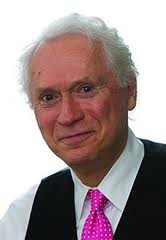 Judge Terence T. Evans - Lawhaha.com Hall of Fame Judge Judge Terence T. Evans, U.S. Court of Appeals for the Seventh Circuit, passed away on August 11, 2011. Here’s a nice tribute to him on the Marquette law school (where he attended law school) faculty blog.
All accounts of Judge Evans and his life mention his keen sense of humor, which certainly shined through in several his judicial opinions. He’s elected to Lawhaha.com’s Strange Judicial Opinions Hall of Fame for the way he pragmatically and cleverly wove humor, especially sports and pop culture, into his opinions, never resorting to sarcasm or belittling as means for amusement. Lawhaha.com’s entries of Evans’ opinions were written long before his death:
If ESPN ever needs a replacement for Chris Berman, here is the perfect candidate: Judge Terence T. Evans of the U.S. Court of Appeals for the Seventh Circuit.
This is a guy with such a deep love for sports that he began his opinion in Hunt’s Generator Committee v. Babcock & Wilcox Co. expressing the wistful sentiment that he would rather be getting ready to watch the World Series than writing an opinion about successor liability for a landfill cleanup. He asked forgiveness if his mind wandered a bit in the opinion.
And wander it did. Reciting the dates of the landfill’s operation sparked fond baseball memories for Judge Evans.
So what that the landfill began operating in September 1959. That date has much more important baseball significance, as Judge Evans explained in this footnote:
FN1. September of 1959 was an exciting time. The San Francisco Giants–who blew off Manhattan’s Polo Grounds after the 1957 season–were leading the Dodgers and the Braves (Milwaukee, not Atlanta) by two games with eight to go in the race for the National League Pennant. But the Giants were playing in old Seals Stadium (a minor league park), a place not suited for World Series play. If they made it to the Series, they thought, they might want to play in the yet unfinished Candlestick Park. They were in a pickle–which way would they go? Fortunately, their old friends, the Dodgers (who, like the Giants, had broken hearts the year before by running away from Ebbets Field) came to the rescue. The Dodgers beat the Giants three straight times over the weekend of September 19-20, sending the Giants reeling into third place. There would be no need to choose between Candlestick Park and Seals Stadium. …
Another party operated the landfill until September 1970, but again, Judge Evans was distracted by the date’s importance to the national pastime:
FN2. In September of 1970, the Milwaukee Brewers were drawing the curtain on their maiden campaign in Milwaukee. Despite the fact that they finished 65-97, 33 games out of the race, baseball was back in town and Milwaukee fans were loving it.
Other important dates included April 8, 1975, the day asset acquisition on the landfill was closed, but more significantly:
FN4. April 8, 1975, was the one-year anniversary of Henry Aaron’s historical 715th dinger which broke Babe Ruth’s lifetime record of 714.
In Olinger v. U.S. Golf Ass’n, Judge Evans demonstrated that his sports knowledge is not limited to baseball. Olinger was a suit by a disabled professional golfer seeking to be allowed to use a golf cart in the U.S. Open, in conflict with the rule that all participants must walk (the U.S. Supreme Court later decided in golfer Casey Martin’s case that the rule must give way under the ADA).
Judge Evans’ defense of the tradition that players must walk is not only impassioned, but provides enough golf factoids to fill a Trivial Pursuit game dedicated solely to golf (fitting, since the activity is one of the quintessential trivial pursuits). For example, did you know that the official “Rules of Golf” provide a two-stroke penalty for asking an opponent how far away he thinks the green is?
— Hunt’s Generator Comm. v. Babcock & Wilcox Co., 863 F. Supp. 879, 881–82 nn. 1, 2, 4 (E.D. Wis. 1994); Olinger v. U.S. Golf Ass’n, 205 F.3d 1001, 1003 (7th Cir. 2000). Thanks to Cynthia Cohan.
November 6th, 2011 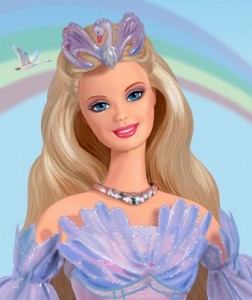 Barbie, looking effervescent despite lawsuit loss. In 1997, the Danish band “Aqua” released a parody of America’s favorite thin plastic girl, Mattel’s Barbie®, called “Barbie Girl.” Mattel sued for trademark infringement and dilution. The federal district court in California granted summary judgment against the plaintiff, ruling the song was protected parody.
The U.S. Court of Appeals for the Ninth Circuit affirmed in an opinion by Judge Alex Kozinski. Judge K opened by posing the case as an epic battle between free speech and intellectual property rights. In his words, “[i]f this were a sci-fi melodrama, it might be called Speech-Zilla meets Trademark Kong.”
In ruling against Mattel, Kozinski opined that Barbie is much more than a mere product in the American conscious. She also had a more colorful past than you might realize:
Barbie was born in Germany in the 1950s as an adult collector’s item. Over the years, Mattel transformed her from a doll that resembled a “German street walker,” as she originally appeared, into a glamorous, long-legged blonde. Barbie has been labeled both the ideal American woman and a bimbo. She has survived attacks both psychic (from feminists critical of her fictitious figure) and physical (more than 500 professional makeovers). She remains a symbol of American girlhood, a public figure who graces the aisles of toy stores throughout the country and beyond. With Barbie, Mattel created not just a toy but a cultural icon.
It’s true. Barbie is a myth, a legend, and, for better or worse, represents the dreams of little girls everywhere. My daughter used to own probably a dozen Barbies. At what point, if any, can a product image become part of the public domain because it has become woven into the fabric of culture itself?
As Kozinski said in discussing Mattel’s trademark-infringement claim:
The problem arises when trademarks transcend their identifying purpose. Some trademarks enter our public discourse and become an integral part of our vocabulary. How else do you say that something’s “the Rolls Royce of its class”? What else is a quick fix, but a Band–Aid? Does the average consumer know to ask for aspirin as “acetyl salicylic acid”? Trademarks often fill in gaps in our vocabulary and add a contemporary flavor to our expressions. Once imbued with such expressive value, the trademark becomes a word in our language and assumes a role outside the bounds of trademark law.
Don’t remember Aqua’s one-hit wonder novelty song? No worries. The court attached the lyrics as an appendix. Here’s the chorus to refresh your memory:
I’m a Barbie girl, in my Barbie world
Life in plastic, it’s fantastic
You can brush my hair, undress me everywhere
Imagination, life is your creation
Come on Barbie, let’s go party!
Here’s the Official YouTube video.
Mattel, this is more humor. Don’t sue.
— Mattel, Inc. v. MCA Records, Inc., 296 F.3d 894, 898, 909 (9th Cir. 2002).
October 31st, 2011 Before his flame-out, Judge Samuel Kent in Galveston, Texas, garnered a lot of attention for his abrasive writing style. Opinion was split in the legal community. Examples are here, here, here and here.
Some lawyers considered his sarcastic, often rude and insulting opinions hilarious. Some considered them very unjudicial and inappropriate. Probably many others viewed them as a combination of both.
Professor Steven Lubet of Northwestern University law school weighed in on the issue with a piece called “Bullying from the Bench,” in The Green Bag. Steve took issue with Kent’s humor, particularly his ad hominem attacks on lawyers. Here’s a brief excerpt:
Federal judges exercise enormous power over lawyers and their clients. Armed with life tenure and broad discretion, a judge can do great damage to an attorney’s reputation and career, while the lawyer has almost no recourse. So when Judge Kent decided to torment the hapless counsel in the Bradshaw case are identified by name in the published opinion—he was taking aim at people who could not defend themselves. …
In litigation, the judge is the maximum boss. Everyone else is a supplicant, compelled to engage in stylized demonstrations of obedience. We stand when the judge enters and leaves the room. Our “pleadings” are “respectfully submitted.” Before speaking, we make sure that it “pleases the court.” We obey the judge’s orders and we even say “thank you” for adverse rulings. …
By belittling the lawyers who appear before him, Judge Kent used his authority to humiliate people who—in the courtroom environment—are comparatively helpless. There is a name for that sort of behavior, and it isn’t adjudication. It’s bullying.
Steven got it right, of course. The relationship between judge and lawyers is about as one-sided as it gets. The judge holds all the cards. Sometimes lawyers deserve to get chewed out, but Kent was over the top.
— Steven Lubet, Bullying from the Bench, 5 Green Bag 2d 11, 12 (2001).
October 31st, 2011 Another ad hominem-laced love letter to lawyers from former U.S. District Judge Samuel Kent, Galveston, TX. This one was a maritime personal injury case in which defense counsel moved for summary judgment on behalf of his client Phillips Petroleum.
Note that, in insulting the lawyers throughout, Judge Kent emphasized that the lawyers for both sides were “likeable” and that he had “affection” for them:
[Judge Kent begins the order by stating the case, then proceeds as follows.]
[T]he Court notes that this case involves two extremely likable lawyers, who have together delivered some of the most amateurish pleadings ever to cross the hallowed causeway into Galveston, an effort which leads the Court to surmise but one plausible explanation. Both attorneys have obviously entered into a secret pact—complete with hats, handshakes and cryptic words—to draft their pleadings entirely in crayon on the back sides of gravy-stained paper place mats, in the hope that the Court would be so charmed by their child-like efforts that their utter dearth of legal authorities in their briefing would go unnoticed.
Whatever actually occurred, the Court is now faced with the daunting task of deciphering their submissions. With Big Chief tablet readied, thick black pencil in hand, and a devil-may-care laugh in the face of death, life on the razor’s edge sense of exhilaration, the Court begins.
[The court discusses summary judgment law, followed by several caustic remarks about the quality of defense counsel’s (representing Phillips) filings, including the statement that “[a] more bumbling approach is difficult to conceive.” Then the court tears into plaintiff’s counsel.]
Plaintiff responds to this deft, yet minimalist analytical wizardry with an equally gossamer wisp of an argument, although Plaintiff does at least cite the federal limitations provision applicable to maritime tort claims. … Naturally, Plaintiff also neglects to provide any analysis whatsoever of why his claim versus Defendant Phillips is a maritime action. Instead, Plaintiff “cites” to a single case from the Fourth Circuit.
Plaintiff’s citation, however, points to a nonexistent Volume “1886” of the Federal Reporter Third Edition and neglects to provide a pinpoint citation for what, after being located, turned out to be a forty-page decision. Ultimately, to the Court’s dismay after reviewing the opinion, it stands simply for the bombshell proposition that torts committed on navigable waters … require the application of general maritime rather than state tort law … The Court cannot even begin to comprehend why this case was selected for reference. It is almost as if Plaintiff’s counsel chose the opinion by throwing long range darts at the Federal Reporter (remarkably enough hitting a nonexistent volume!). …
Despite the continued shortcomings of Plaintiff’s supplemental submission, the Court commends Plaintiff for his vastly improved choice of crayon—Brick Red is much easier on the eyes than Goldenrod, and stands out much better amidst the mustard splotched about Plaintiff’s briefing. But at the end of the day, even if you put a calico dress on it and call it Florence, a pig is still a pig. Now, alas, the Court must return to grownup land. [Court resolves issue on its own.] …
Take heed and be suitably awed, oh boys and girls—the Court was able to state the issue and its resolution in one paragraph … despite dozens of pages of gibberish from the parties to the contrary! …
After this remarkably long walk on a short legal pier, having received no useful guidance whatever from either party, the Court has endeavored, primarily based upon its affection for both counsel, but also out of its own sense of morbid curiosity, to resolve what it perceived to be the legal issue presented. Despite the waste of perfectly good crayon seen in both parties’ briefing … the Court believes it has satisfactorily resolved this matter. Defendant’s Motion for Summary Judgment is GRANTED …
— Bradshaw v. Unity Marine Corp., 147 F. Supp. 2d 668, 670–72 (S.D. Tex. 2001). Thanks to Ira Rosenau.
October 31st, 2011 Some believe the writings of impeached U.S. District Judge Samuel B. Kent, Southern District of Texas, are quite funny, but probably not many lawyers in Galveston were laughing after his June 2001 order on a motion to transfer for improper venue. Being Juge Kent, he couldn’t just deny the motion. He had to rip apart the lawyer who filed the motion:
[A]ny person with even a correspondence-course level understanding of federal practice and procedure would recognize that Defendant’s Motion is patently insipid, ludicrous and utterly unequivocally without any merit whatsoever. Worse, it is just plain blatantly wrong in light of the unambiguous language of a decades old federal statute and veritable mountains of case law addressing venue propriety.
Sound bad? It gets worse. Judge Kent went on to state that “Defendant’s obnoxiously ancient, boilerplate, inane Motion is emphatically DENIED.”
For the coup de grace, Judge Kent ended by disqualifying the lawyer from further appearing in the case “for submitting this asinine tripe.”
— Labor Force, Inc. v. Jacintoport Corp., 144 F. Supp. 2d 740 (S.D. Tex. 2001) (opinion subsequently withdrawn from bound volume).
October 31st, 2011 Here’s another widely circulated sarcastic opinion from former U.S. District Judge Samuel Kent, Galveston, Texas. Say what you want about Kent, and there is plenty to say, he was a clever writer. And who else could insult six entire nations in a single paragraph (the first one below)?
The governments of several foreign countries sued American tobacco companies for health care costs allegedly caused by the defendants’ product. Judge Kent, in his inimitable way, sua sponte transferred the case to the District of Columbia:
The governments of Guatemala, Panama, Nicaragua, Thailand, Venezuela, and Bolivia have filed suit in [several geographically diverse locales in the U.S.] Why none of these countries seems to have a court system their own governments have confidence in is a mystery to this Court. Moreover, given the tremendous number of United States jurisdictions encompassing fascinating and exotic places, the Court can hardly imagine why the Republic of Bolivia elected to file suit in the veritable hinterlands of Brazoria County, Texas. The Court seriously doubts whether Brazoria County has ever seen a live Bolivian … even on the Discovery Channel.
Though only here by removal, this humble Court by the sea is certainly flattered by what must be the worldwide renown of rural Texas courts for dispensing justice with unparalleled fairness and alacrity, apparently in common discussion even on the mountain peaks of Bolivia! Still, the Court would be remiss in accepting an obligation for which it truly does not have the necessary resources …
[T]he capacity of this Court to address the complex and sophisticated issues of international law and foreign relations presented by this case is dwarfed by that of its esteemed colleagues in the District of Columbia who deftly address such awesome tasks as a matter of course. … Such a Bench, well-populated with genuinely renowned intellects, can certainly better bear and share the burden of multidistrict litigation than this single judge division, where the judge moves his lips when he reads ….
[I]t is the Court’s opinion that the District of Columbia, located in this Nation’s capital, is a much more logical venue for the parties and witnesses in this action because, among other things, Plaintiff has an embassy in Washington, D.C., and thus a physical presence and governmental representatives there, whereas there isn’t even a Bolivian restaurant anywhere near here! Although the jurisdiction of this Court boasts no similar foreign offices, a somewhat dated globe is within its possession.
While the Court does not therefrom profess to understand all of the political subtleties of the geographical transmogrifications ongoing in Eastern Europe, the Court is virtually certain that Bolivia is not within the four counties over which this Court presides, even though the words Bolivia and Brazoria are a lot alike and caused some real, initial confusion until the Court conferred with its law clerks. Thus, it is readily apparent, even from an outdated globe such as that possessed by this Court, that Bolivia, a hemisphere away, ain’t in south-central Texas, and that, at the very least, the District of Columbia is a more appropriate venue (though Bolivia isn’t located there either).
Furthermore, as this Judicial District bears no significant relationship to any of the matters at issue, and the judge of this Court simply loves cigars, the Plaintiff can be expected to suffer neither harm nor prejudice by a transfer to Washington, D.C., a Bench better able to rise to the smoky challenges presented by this case, despite the alleged and historic presence there of countless “smoke-filled” rooms.
— Republic of Bolivia v. Philip Morris Cos., 39 F. Supp. 2d 1008, 1009–10 (S.D. Tex. 1999). Thanks to Bob Van Voris.
October 31st, 2011 The notorious Judge Samuel Kent, former U.S. District Judge for the Southern District of Texas, made his first big spash on the Strange Judicial Opinions screen in a 1996 case called Smith v. Colonial Penn Ins. Co.
A defendant in a breach of contract case in Galveston apparently insulted Judge Kent’s hometown and Southern pride when it filed a motion to transfer venue in the case from Galveston to Houston based on forum non conveniens. Defendant’s motion said Galveston did not have a commercial airport into which defendant’s agents could fly. The nearest airport was Houston’s Hobby Airport, 40 miles away.
Judge Kent was somethingless than sympathetic to defendant’s plight. He sarcastically skewered the lawyers (some paragraph breaks inserted):
Defendant should be assured that it is not embarking on a three-week-long trip via covered wagons when it travels to Galveston. Rather, Defendant will be pleased to discover that the highway is paved and lighted all the way to Galveston, and thanks to the efforts of this Court’s predecessor, Judge Roy Bean, the trip should be free of rustlers, hooligans, or vicious varmints of unsavory kind. Moreover, the speed limit was recently increased to seventy miles per hour on most of the road leading to Galveston, so Defendant should be able to hurtle to justice at lightning speed.
To assuage Defendant’s worries about the inconvenience of the drive, the Court notes that Houston’s Hobby Airport is located about equal drivetime from downtown Houston and the Galveston courthouse. Defendant will likely find it an easy, traffic-free ride to Galveston as compared to a congested, construction-riddled drive to downtown Houston. The Court notes that any inconvenience suffered in having to drive to Galveston may likely be offset by the peacefulness of the ride and the scenic beauty of the sunny isle.
As to Defendant’s argument that Houston might also be a more convenient forum for Plaintiff, the Court notes that Plaintiff picked Galveston as her forum of choice even though she resides in San Antonio. Defendant argues that flight travel is available between Houston and San Antonio but is not available between Galveston and San Antonio, again because of the absence of a commercial airport. Alas, this Court’s kingdom for a commercial airport! [Fn]
[Fn.] Defendant will again be pleased to know that regular limousine service is available from Hobby Airport, even to the steps of this humble courthouse, which has got lights, indoor plummin’, ‘lectric doors, and all sorts of new stuff, almost like them big courthouses back East.
The Court is unpersuaded by this argument because it is not this Court’s concern how Plaintiff gets here, whether it be by plane, train, automobile, horseback, foot, or on the back of a huge Texas jackrabbit, as long as Plaintiff is here at the proper date and time. Thus, the Court declines to disturb the forum chosen by the Plaintiff and introduce the likelihood of delay inherent in any transfer simply to avoid the insignificant inconvenience that Defendant may suffer by litigating this matter in Galveston rather than Houston.
And that’s how Lawhaha.com first met Judge Kent.
— Smith v. Colonial Penn Ins. Co., 943 F. Supp. 782, 784–85 (S.D. Tex. 1996).
|
Funny Law School Stories
For all its terror and tedium, law school can be a hilarious place. Everyone has a funny law school story. What’s your story?
|
Product Warning Labels
A variety of warning labels, some good, some silly and some just really odd. If you come encounter a funny or interesting product warning label, please send it along.
|
Tortland

Tortland collects interesting tort cases, warning labels, and photos of potential torts. Raise risk awareness. Play "Spot the Tort." |
Weird Patents
Think it’s really hard to get a patent? Think again.
|
Legal Oddities
From the simply curious to the downright bizarre, a collection of amusing law-related artifacts.
|
Spot the Tort
Have fun and make the world a safer place. Send in pictures of dangerous conditions you stumble upon (figuratively only, we hope) out there in Tortland.
|
Legal Education
Collecting any and all amusing tidbits related to legal education.
|
Harmless Error
McClurg's twisted legal humor column ran for more than four years
in the American Bar Association Journal.
|
|
|









